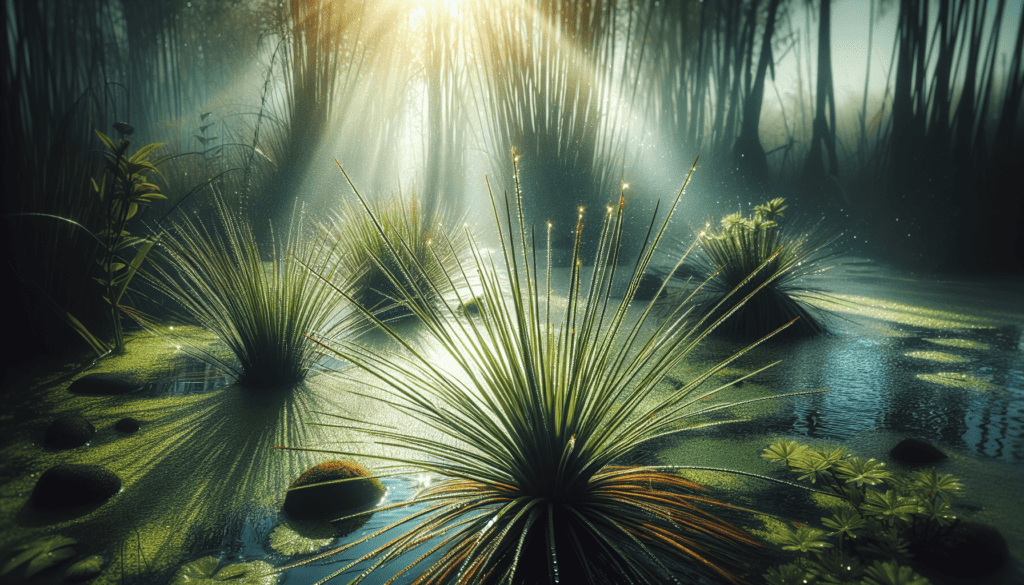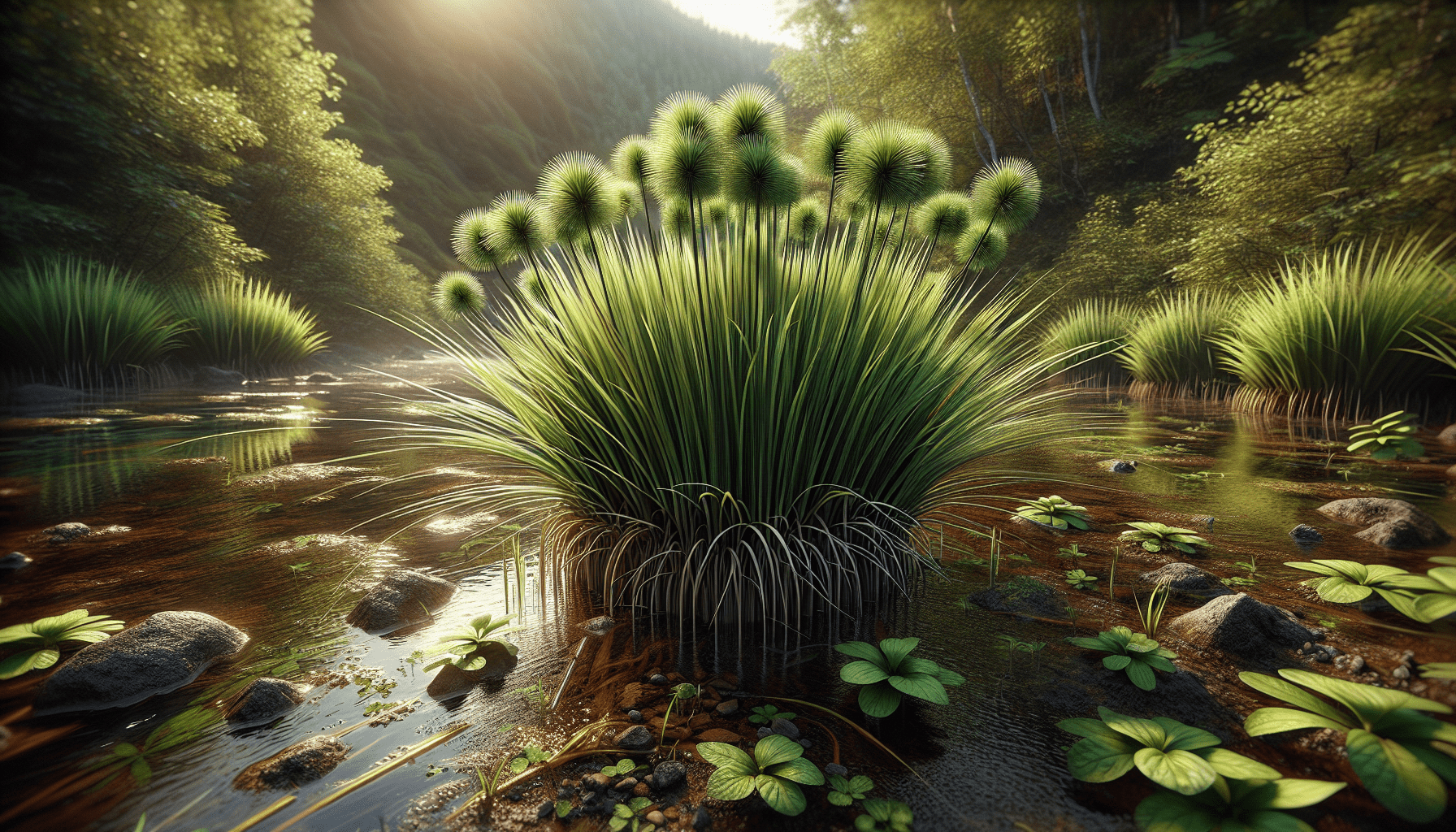In this scholarly examination, you will unravel the unknown about the aquatic plant recognized as the Common Spike Rush. Embark on this enlightening journey that uncovers the biology of this underwater flora, its inherent ecological importance, adaptability, and unique aspects that distinguish it from other hydrophytes. Armed with rich scientific terminology and empirical evidence, you will dive into the compelling narrative that illuminates this widely overlooked plant species, fostering not only your botanical understanding but also encouraging a deeper appreciation for the role these unseen heroes play in sustaining aquatic ecosystems.

Definition of Common Spike Rush
Common Spike Rush, an aquatic plant, is known for its unique physical characteristics, ecological benefits, and extensive geographical distribution. This comprehensive article serves to provide sufficient knowledge and understanding of its botanic significance, life cycle, methods of propagation, cultivation, and conservation status among other essential facets.
Understanding Common Spike Rush
Common Spike Rush or Eleocharis palustris is a perennial, wetland plant that thrives optimally in moist and wet habitats. It is so named due to the distinctive spiked clusters it bears during its flowering phase. This plant holds substantial ecological significance, presenting a multitude of benefits to its immediate environment.
Botanic name and family
The botanic name of this plant is Eleocharis palustris. It belongs to the Cyperaceae family, also known as the sedge family, characterized by grass-like plants that have triangular stems and reduced leaves.
Regions where the plant is commonly found
You can commonly find Common Spike Rush across various regions uniformly across the world. It thrives in North America, Europe, Northern Asia, and North Africa.
Physical Characteristics of Common Spike Rush
Description of plant structure
The quintessential structure of Common Spike Rush is similar to that of grass, with slender green stems that are flanked by slightly recurved bristles. The stems are typically round without any leaf blades, giving this plant an appearance of thin, elongated green spikes emerging from the ground.
Height and spread of the plant
As for the plant’s size, the Common Spike Rush can attain a height ranging between 15 and 100 cm (6 inches – 3 feet). The growth spread largely depends on the plant’s habitat and environmental conditions.
Description of leaves
Unlike other plants, Common Spike Rush does not have conventional leaves. Instead, it possesses what you call sheaths wrapped tightly around the stems. These sheaths are brown at the base transitioning to green at the top.
Flowering details
During its flowering phase, this plant bears unique spiked clusters, which have granted it the name ‘Spike Rush’. These flower spikes are generally 1-2 cm long and bear tiny reddish-brown to black flowers with perigynia covering them.
Habitat and Distribution
Ideal weather and environmental conditions
Common Spike Rush is an adaptive plant that can flourish in various weather conditions, ranging from humid subtropical to the cooler temperate climates. Being a wetland plant, it favors moist and wet environments, such as marshes, swamps, wet meadows, and along bodies of water.
Natural habitat
Common Spike Rush primarily thrives in waterlogged soils and marshy areas. You can mostly find them adjacent to lakes or stagnant water bodies, streams and riverbanks, and even in the shallow parts of slow-moving water systems.
Geographical distribution
Geographically spanning over various continents, including North America, Europe, Northern Asia, and North Africa, the plant has proven to demonstrate substantial resilience and adaptability to different habitats and climates.

Life Cycle and Growth
Details of the plant’s life cycle
Common Spike Rush, being a perennial plant, endures more than two years. The plant completes its life cycle in three phases, starting from vegetative growth, flowering and fruiting, and ending with a period of dormancy during colder months.
Information about plant maturity
The plant typically matures and begins to flower during late spring and early summer. During this phase, one stem may bear a single spikelet with numerous flowers.
Understanding seasonal growth patterns
During early spring, Common Spike Rush starts with its vegetative growth phase and proceeds to its flowering stage by late spring or early summer. Post flowering, the plant enters dormancy during the colder winter months.
Propagation of Common Spike Rush
Methods of propagating Common Spike Rush
Common Spike Rush is primarily propagated through seeds, though division of rhizomes can also be a successful method. The seeds require a period of cold stratification before sowing to help break dormancy and encourage germination.
Ideal conditions for propagation
To propagate Common Spike Rush effectively, conditions mimicking its natural habitat should be created. The seeds need to be sown in damp soil under full sun. If propagating through rhizome division, ensure the divisions are planted in moist soil.
Challenges and solutions during propagation
Propagation of Common Spike Rush can be challenged by several factors, such as inadequate soil moisture or lack of sunlight, leading to the plant’s failure to thrive. To overcome these challenges, ensure the plant is always kept in partial to full sunlight and that the soil remains consistently moist.
Benefits of Common Spike Rush
Ecological benefits
Common Spike Rush brings significant ecological benefits to its environment. It aids in erosion control, serves as a habitat to a variety of water insects, and purifies water by absorbing harmful substances.
Uses in landscaping
In the field of landscaping, the plant is a popular choice for creating natural-looking water features. It can also be planted on the banks of man-made ponds or lakes for erosion control and aesthetics enhancement.
Potential uses in medicine and industry
Though not widely recognized for medicinal purposes, some cultures hold beliefs about the Common Spike Rush’s potential medicinal properties. As far as industrial use is concerned, the plant has been traditionally used in basket weaving.
Cultivation and Care
Step-by-step process of cultivating Common Spike Rush
The cultivation of Common Spike Rush involves several steps. The plant can either be propagated through seeds or the division of rhizomes. Once planted, it should receive full sunlight and sufficient water to mimic its natural habitat. It is tolerant of various soil types as long as the soil remains consistently moist.
How to care for Common Spike Rush
Taking care of Common Spike Rush primarily involves ensuring adequate water supply to preserve the soil’s moisture, providing full sunlight, and keeping the plant in a cool to slightly warm environment. Plucking or pruning is rarely needed due to the slow growth of this plant.
Preventive measures against common diseases and pests
While typically pest and disease resistant, preventative measures can be taken to preserved the plant’s health. Keeping the soil well-drained and aerated can thwart fungal and bacterial infections. At the same time, regular inspection of the plant can ensure early detection and treatment of prevalent pests.
Challenges in Growing Common Spike Rush
Common diseases and pests in Common Spike Rush
Common Spike Rush is somewhat resistant to diseases and pests. However, it may occasionally encounter fungal and bacterial infections. As for pests; aphids, mites, or whiteflies may also pose a threat.
Methods to prevent and treat these issues
Preventive measures against diseases involve proper water management and avoiding waterlogged soil to prevent fungal growth. In case of pests, organic pesticides or insecticidal soap can be used for treatment.
Understanding the effects of environmental constraints
Certain environmental factors can hinder the growth of the Common Spike Rush. These include lack of sunlight, improper water management leading to dryness or waterlogging, and soil that is not nutrient-rich. Therefore, it is crucial to monitor and manage these factors effectively.
Conservation Status
Current conservation status of Common Spike Rush
Despite its vast geographical presence, the Common Spike Rush is not currently listed under any threatened or endangered status by global conservation bodies. However, local declines and loss of population have been documented due to habitat destruction.
Famous protection efforts
While no specific global protection effort is levied towards Common Spike Rush, the plant naturally benefits from wetland preservation initiatives launched in various regions worldwide. Retention of wetlands not only aids in the proliferation of this species but also maintains the fragile ecosystem where it thrives.
Practices for sustainable cultivation
Sustainable cultivation can be achieved through controlled propagation and avoidance of overharvesting, ensuring that the plant spreads naturally in its habitat. The use of organic and environment-friendly plant care products also contributes to sustainable cultivation.
Myths and Legends around Common Spike Rush
Traditional uses
Historically, Common Spike Rush has been used for various purposes. It was woven into baskets or mats by the Native Americans, while its young shoots and tubers were used for food.
Cultural and historical significance
In certain cultures, Common Spike Rush holds symbolic importance. For example, in some parts of Europe, folk traditions associate the plant with protection against all forms of negativity, and thus it can be found in home decorations or ceremonial garlands.
Interesting myths and legends
One old tale tells of a spurned lover who transformed himself into a Common Spike Rush to remain forever near the bank where his beloved routinely bathed. Such stories, while not scientifically studied, provide an insight into how humans have always found ways to relate and connect their lives to nature.
